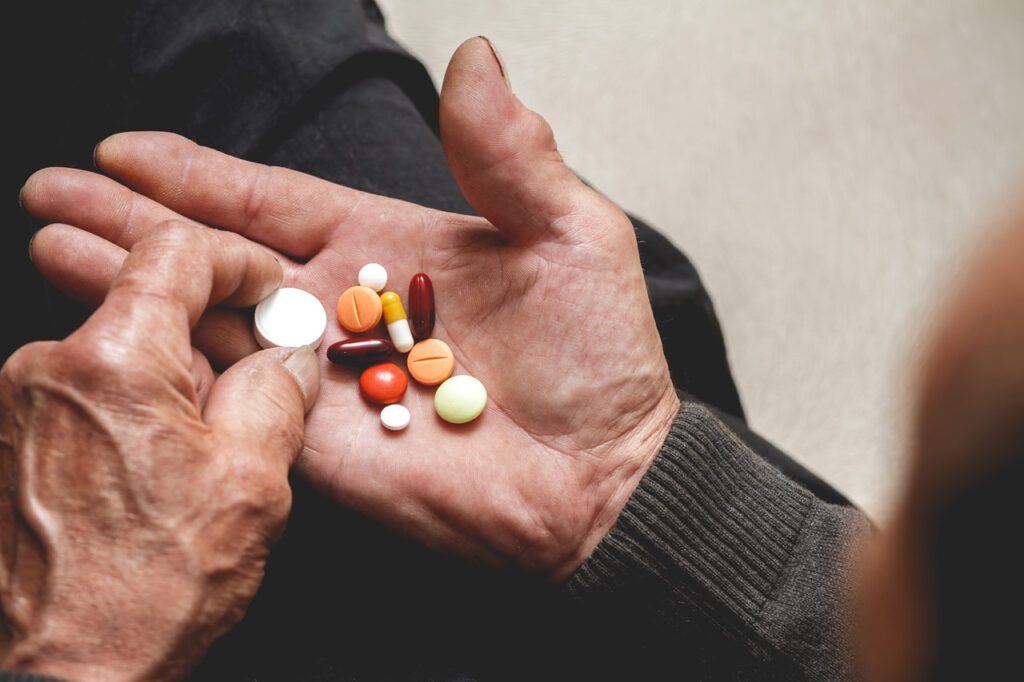Navigating life with a mind that often feels foggy, or emotions that wildly swing without warning, is a daily reality for many dealing with mental health conditions. However, we live in a time where modern medicine has a vast array of drugs to help folks on their wellness journey.
Navigating the mental health medication maze can be disorienting, there are so many prescriptions out there and many outrageous claims to go with them. In this blog we are going to demystify some of these existing drugs—like SSRIs, SNRIs, benzodiazepines, mood stabilizers, and more. We will even peer into the upcoming landscape of psychedelic assisted therapies, through an old anesthetic drug that has entered the mental health scene, ketamine. We will explain and explore each of these and their unique pros and cons.
SSRIs and SNRIs: The Mood Lifters
In the world of mental health medications, Selective Serotonin Reuptake Inhibitors (SSRIs) and Serotonin and Norepinephrine Reuptake Inhibitors (SNRIs) – try saying that five times fast! – are akin to superheroes, taking on depression and anxiety head-on. Their superpower lies in their ability to give your brain a mood boost. They accomplish this by ensuring certain chemicals like serotonin and norepinephrine, known to uplift mood, hang around a bit longer in your brain. They are like the friendly traffic controllers of your brain’s neurotransmitters.
Medications like Prozac, Zoloft, Celexa, Effexor, and Cymbalta might ring a bell. They’ve earned their reputation because of the significant reduction of symptoms of depression and anxiety and improvement they can bring to people’s lives. But, as with all superheroes, they do have their vulnerabilities. These can manifest as side effects like sleep disturbances, weight fluctuations, or sexual dysfunction. And remember, they are not a rapid solution but often require a few weeks to fully get into their stride.
Other Medications


Beyond the realm of antidepressants, there’s a whole cast of other characters in the mental health medication cabinet.
Most commonly, benzodiazepines, those reliable sidekicks for acute anxiety attacks. You might know them by their street names – Xanax and Ativan.
Then there are the mood stabilizers like lithium. They are helpful peacekeepers for folks living with bipolar disorder, bringing balance to emotional highs and lows.
And let’s not forget antipsychotic drugs, like risperidone and aripiprazole. They mix and tweak the levels of brain chemicals, dopamine, and serotonin, to create just the right balance. This adjustment dials down the noise of hallucinations, delusions, and other schizophrenia symptoms. Result? A clearer headspace, helping individuals navigate through daily life with a little more ease.
Ketamine: Reinventing Its Role in the World of Medicine
This compound first came on the scene back in the 1960s as an anesthetic for surgery, and since then, it’s taken on several roles – from being used in combat medicine to gaining a reputation as a party drug. Now, it’s stepping onto a new stage as a potential breakthrough in treating severe depression.
The buzz on ketamine is well-earned. Unlike most traditional antidepressants that can take weeks to kick in, ketamine has shown to alleviate depressive symptoms in just a few hours. A real game-changer for people grappling with intense depression.
So, what makes ketamine so unique? It’s got a unique way of communicating with our brains. Instead of focusing on the serotonin or norepinephrine systems like most antidepressants, ketamine interacts with a neurotransmitter named glutamate – the brain’s main ‘chat system’.
Here’s a closer look at how it works: Ketamine blocks some glutamate receptors while exciting others. This unique approach sparks a chain reaction leading to the release of growth factors. These growth factors act like a repair team, fixing the synaptic connections between brain cells that stress and depression have harmed. It’s essentially a roadworks crew for your neural pathways.
Scientists are diligently investigating its long-term effects and safety to ensure it’s a helpful tool that won’t cause harm in the long run.
A Local Case study
Of all the Latinx adults grappling with major depressive episodes (MDE), Puerto Ricans form the largest group. They also unfortunately report feeling in ‘good to excellent’ health less often than their counterparts, face poverty at the highest rates, and experience serious psychological distress more frequently.
During a 2014 study by the National Library of Medicine, more than half – in fact, 62.7% – of folks using antidepressants are sticking exclusively to SSRIs. A smaller, but still significant, group of about 10.4% took a liking to tricyclic antidepressants, perhaps ones you’ve heard of, like Elavil or Asendin. Meanwhile, around 26.8% preferred to have a variety of antidepressants in their tool kit or opted for different types altogether.
When we compare antidepressant use among the group of Latinx adults, those with Cuban or Puerto Rican roots seem to have the highest usage of these mood-balancing compounds.
Studies also find that age plays a role, showing that as we age, the use of antidepressants tends to increase. Only about 2.4% of young adults, aged 18-44, use antidepressants. However, this number jumps to 12.6% for those aged 65 and above.
Long-term Commitment and Costs


We can think of mental health meds as being a bit like a gym membership for the mind. They need regular, sometimes daily, attention over months or even years to keep showing their benefits. But, just like a gym membership, they can hit your wallet hard, especially if your health insurance isn’t stepping up to the plate.
In the United States, mental health care takes a hefty bite out of the budget, totaling around $113 billion annually. To put it in perspective, let’s focus on antidepressants. The monthly cost of a 10-milligram package of fluoxetine (Prozac) is roughly $28, while a prescription of escitalopram (Lexapro) can set you back around $87 at retail price.
But the costs aren’t just monetary. These treatments can sometimes come with an unwanted side order of side effects, ranging from the minor nuisances to more severe issues. Then, there’s the hidden cost, the one we don’t talk about enough: the emotional toll. Stigma around mental health disorders and psychiatric medications still exists, and it can push people into feeling shame and isolation.
Now, don’t get me wrong. Mental health pharmaceuticals have been a lifeline for many, helping them navigate the stormy and unpredictable seas of mental health conditions.
Pills? Sure, they can help, but they’re only part of the bigger picture. The real game-changer comes when we combine them with things like therapy and all-natural wellness practices. That’s when people begin to tap into their own personal power, learning ways to handle life’s ups and downs, and finding real, long-term relief. It’s an exciting trip towards a future where feeling good in our minds and bodies isn’t just a daydream—it’s part of everyday life.
Resources
- General Information on SSRIs and SNRIs: Mayo Clinic’s resources on [SSRIs]https://www.mayoclinic.org/diseases-conditions/depression/in-depth/ssris/art-20044825
- and [SNRIs] https://www.mayoclinic.org/diseases-conditions/depression/in-depth/antidepressants/art-20044970.
- Antidepressant Use in the U.S: Pratt LA., Brody DJ., Gu Q. Antidepressant Use Among Persons Aged 12 and Over: United States, 2011–2014. NCHS Data Brief, No 283, 2017. https://www.cdc.gov/nchs/products/databriefs/db283.htm
- Ketamine for Depression: Sanacora G., Frye M.A., McDonald W., et al. A Consensus Statement on the Use of Ketamine in the Treatment of Mood Disorders. JAMA Psychiatry. 2017;74(4):399–405. https://jamanetwork.com/journals/jamapsychiatry/fullarticle/2605202
- Cost of Mental Health Drugs: Trish E., Xu J., Joyce G. Medicare Beneficiaries Face Growing Out-Of-Pocket Burden For Specialty Drugs While In Catastrophic Coverage Phase. Health Affairs. 2016;35(9):1564–1571. https://www.healthaffairs.org/doi/full/10.1377/hlthaff.2016.0239
Unite for Healing: Your Contribution, Puerto Rico's Transformation.
Embark on a journey of transformation with the Pravan Foundation. Your generous donation becomes a beacon of hope, illuminating the path to mental wellness for countless individuals in Puerto Rico. Together, let’s break down barriers, ushering in a new era of mental health and well-being.
Make a difference today – your contribution is the cornerstone of change, healing, and renewed hope across the island. Join us, and be the change that Puerto Rico needs. Unite for healing, unite for transformation, unite for a brighter tomorrow.
